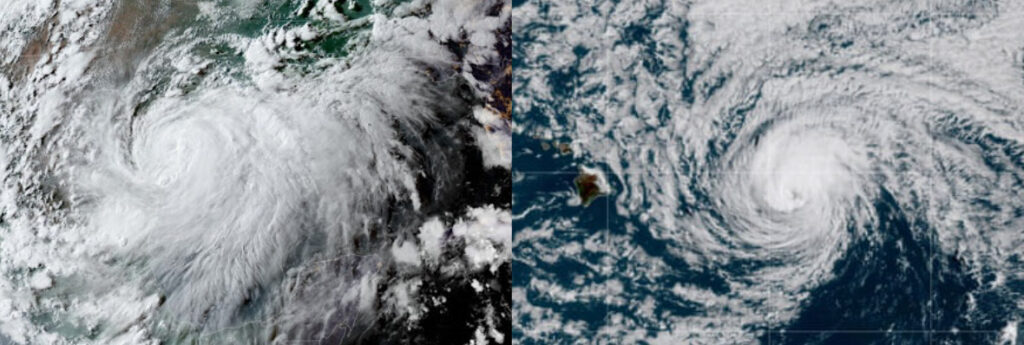A day after roaring ashore as a hurricane, Hanna lashed the Texas Gulf Coast on Sunday with high winds and drenching rains that destroyed boats, flooded streets and knocked out power across a region already reeling from a surge in coronavirus cases.
Downgraded to a tropical storm, Hanna hovered over the US-Mexico border in the morning with winds near 50 mph (85 kph), the National Hurricane Center said. It was expected to unload as much as 18 inches of rain (45 centimetres) on parts of South Texas and northeastern Mexico.
Daniel Brown, a senior hurricane specialist, urged people in flooded areas to shelter in place.
Shelters were opened in hotels, schools and gyms. In Hidalgo County, Texas, a community building in the town of Mercedes known as the “Dome” was set aside for evacuees who had tested positive for COVID-19 or were exposed to the virus. The county instructed those who needed shelter to bring masks and hand sanitizer if they could.
Coastal states scrambled this spring to adjust emergency hurricane plans to account for the virus, and Hanna was the first big test.
Gov. Greg Abbott said Saturday that some people in need of shelter would be given hotel rooms to keep them apart from others.
“We cannot allow this hurricane to lead to a more catastrophically deadly event by stoking additional spread of COVID-19 that could lead to fatalities,” he said.
The first hurricane of the 2020 Atlantic season blew ashore as a Category 1 storm late Saturday afternoon with winds of 90 mph (145 kph) not far from Port Mansfield, which is about 130 miles (210 kilometres) south of Corpus Christi.
Parts of South Texas had gotten at least 9 inches (23 centimetres) of rain, including Cameron County, which includes Brownsville.
The Coast Guard helped rescue a couple without injuries after their sailboat began taking on water Saturday evening in a harbour near Corpus Christi.
More than 180,000 customers were without power Sunday morning throughout South Texas, including Corpus Christi, Harlingen and Brownsville.
Corpus Christi is in Nueces County, where health officials made headlines when they revealed that 60 babies tested positive for COVID-19 from July 1 to July 16. Farther south in Cameron County, more than 300 new cases have been reported almost daily for the past two weeks. The past week has also been the county’s deadliest of the pandemic.
Hanna came nearly three years after Hurricane Harvey blew ashore northeast of Corpus Christi. Hanna was not expected to be as destructive as Harvey, which killed 68 people and caused an estimated US $125 billion in damage in Texas.
Mexico
Mexico’s northeasternmost states, Tamaulipas and Nuevo Leon, also took precautions ahead of the storm. Tamaulipas disinfected shelters to try to avoid spreading COVID-19, authorities said.
In the Mexican city of Matamoros, across from Brownsville, volunteers kept a close eye on Hanna as the rains shook tents in a refugee camp housing an estimated 1,300 asylum seekers, including newborns and elderly people. They have been waiting for months for court dates under a US immigration policy that requires them to remain in Mexico.
Hawaii
In the Pacific Ocean, meanwhile, Hurricane Douglas closed in on Hawaii over the weekend.
Oahu, home to the state’s largest city, Honolulu, was placed under a hurricane warning with the storm beginning to impact the island as early as late morning. Kauai and Maui were also placed under warning status Sunday, while a hurricane watch was cancelled for the Big Island.
Donald Trump issued an emergency declaration for Hawaii because of the hurricane, directing federal assistance to supplement state and local response efforts.
Hawaiian Airlines cancelled all Sunday flights between Hawaii and the US mainland and also between the other islands.
“We know that it is weakening as it approaches, but it still will have significant impact on each island,” Hawaii Gov. David Ige said Saturday.
Ige said residents should already have their 14-day emergency supply kit in place, but because of COVID-19, he encouraged people to add masks, hand sanitizer and sanitizing wipes.

